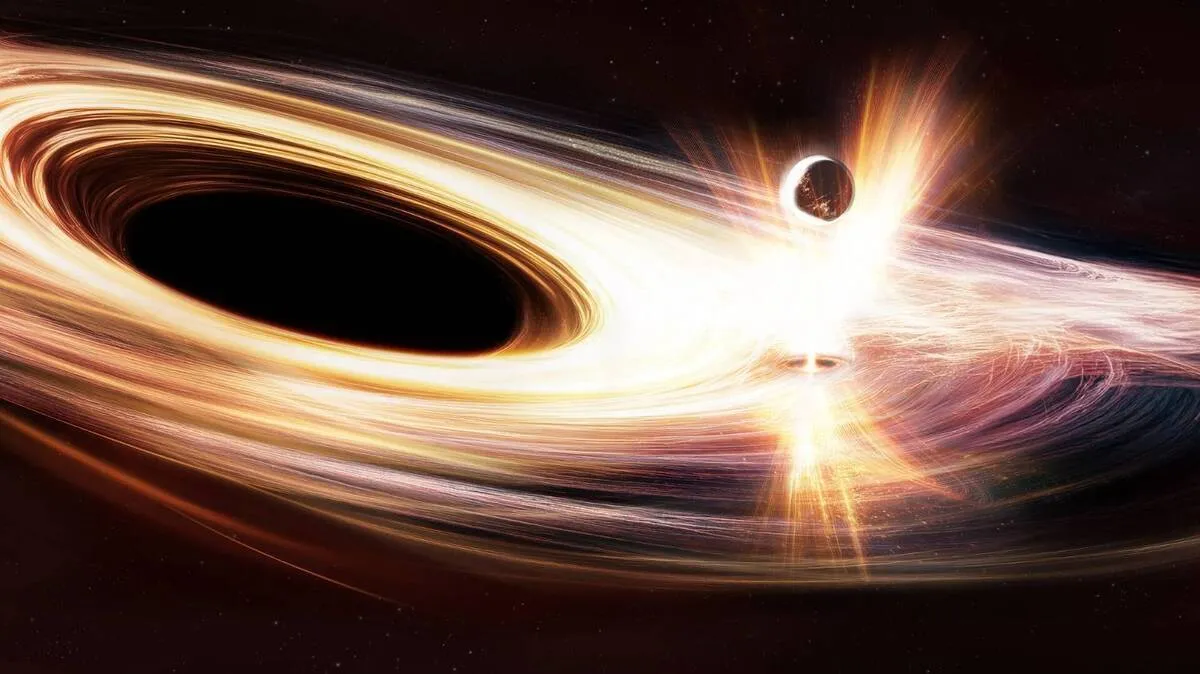Supercomputer Captures Birth of Black Hole in 1.5 Seconds

Scientists led by the Max Planck Institute for Gravitational Physics have completed the longest and most detailed simulation ever of a binary neutron star merger. The simulation spans 1.5 seconds of real time—a major leap forward in modeling these extreme cosmic events, the journal Physical Review Letters reported.
Using an astonishing 130 million CPU hours, the team modeled complex physics including Einstein’s general relativity, neutrino emissions, and intense magnetic fields. The simulation follows the dramatic evolution from neutron stars spiraling together to the sudden collapse into a black hole, followed by the launch of a powerful jet.
This simulation provides critical predictions about the gravitational-wave signal, neutrino burst, kilonova explosion, and how matter is ejected into space. These insights help scientists better prepare for and interpret future multi-messenger detections—cases where telescopes and detectors capture multiple signals from the same cosmic event.
When two neutron stars collide, the universe sends out a spectacular series of signals—gravitational waves, flashes of light, streams of neutrinos, and bursts of energy across the electromagnetic spectrum. These rare cosmic smashups are perfect candidates for multi-messenger astronomy, a powerful new way of observing the universe that combines information from different types of detectors to get a complete picture of one event.
To catch all these signals, scientists need more than just traditional telescopes. They rely on an international network of instruments that includes gravitational wave detectors, neutrino observatories, and space- and ground-based telescopes. But coordinating all of these requires highly accurate models to know exactly what to look for—and when.
That’s where a major breakthrough comes in.
“Predicting the multi-messenger signals from binary neutron star mergers from first principles is extremely difficult. We have now succeeded in doing just that,” says Kota Hayashi, a postdoctoral researcher in the Computational Relativistic Astrophysics department at the Max Planck Institute for Gravitational Physics (Albert Einstein Institute) in the Potsdam Science Park. “Using the Fugaku supercomputer in Japan, we have performed the longest and most complex simulation of a binary neutron star merger to date.”
Hayashi and his team used Japan’s Fugaku supercomputer, one of the most powerful in the world, to simulate a neutron star collision from start to finish. The simulation is the longest and most detailed ever performed, covering 1.5 seconds of real time and using 130 million CPU hours. At its peak, it ran on up to 80,000 processors simultaneously.
The model incorporates the effects of Einstein’s general relativity, neutrino emissions, and intense magnetic fields, capturing the extreme physics inside these dense, dying stars as they spiral together, collide, and form a black hole.
The simulation starts with very few assumptions – neutron stars with strong magnetic fields orbiting each other – and evolves the binary self-consistently over time based on basic physical principles. “Our new simulation follows the binary all the way through its evolution: inspiral, merger, and the post-merger phase, including the jet formation. It provides the first complete picture of the entire process and thus valuable information for future observations of such events,” explains Kota Hayashi.
Initially, the two neutron stars (simulated at 1.25 and 1.65 times the mass of our Sun) orbit each other five times. During this inspiral phase, they fall towards each other as they lose orbital energy, which is emitted as gravitational waves. Because of the high total mass, the merger remnant promptly collapses into a black hole. The simulation predicts the gravitational-wave signal, the first of the observable multi-messenger signals.
After the merger, a disk of matter forms around the remnant black hole. In the disk, the magnetic field is amplified by the winding of the field lines and dynamo effects. The interaction with the fast spin of the black hole then further intensifies the magnetic field. This creates an outflow of energy along the rotational axis of the black hole.
“We think that this energy flow along the black hole axis, driven by magnetic fields, powers a gamma-ray burst,” says Masaru Shibata, director of the Computational Relativistic Astrophysics department. “This agrees with what we know from previous observations and provides further insight into the inner workings of neutron star mergers.”
The team further uses their simulation to derive the expected emission of neutrinos from binary neutron star mergers. “What we’ve learned about jet formation and magnetic field dynamics is crucial for our interpretation and understanding of neutron star mergers and their associated counterparts,” explains Masaru Shibata. The simulation provides information on how much matter is ejected into the interstellar medium and thus makes it possible to predict the kilonova. This is the luminous cloud of gas and dust that is rich in heavy elements. When the first collision of two neutron stars on 17 August 2017 was detected and monitored by gravitational wave detectors and subsequently by various other telescopes, researchers discovered elements such as gold in particular, which are heavier than iron. Even though theoretical physicists suspected such kilonovae of producing these particularly heavy elements, this theory was confirmed for the first time in 2017. Only iron and lighter elements can be created in the interior of stars.
4155/v





















